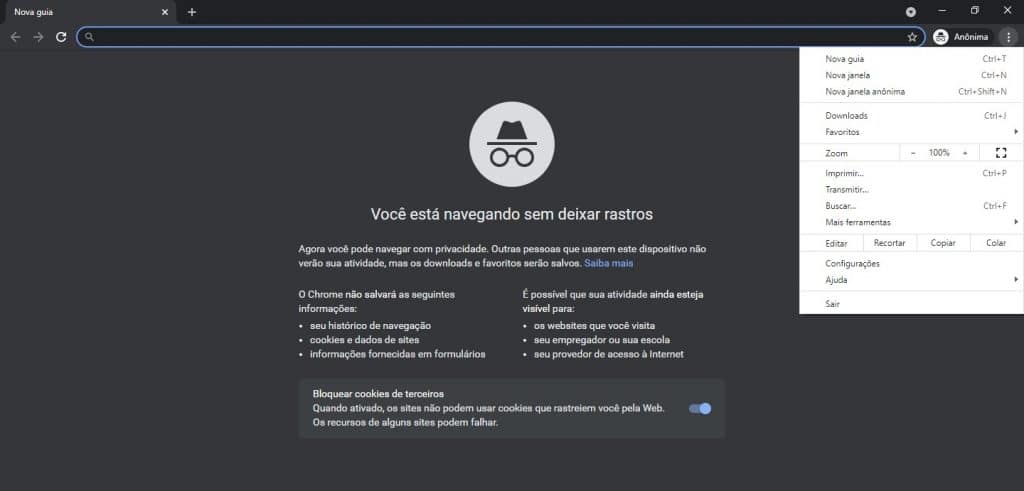Known and widely used by its users, the Chrome browser’s dark mode is just one of the customization features that the browser offers. But this Friday (9), Google decided to provide another option for customizing your browser and announced the native dark mode for anonymous windows in Chrome Canary.
Canary is a kind of test version of Google Chrome: the browser receives the latest news before being released in the common browser, but it may have bugs and instability because it is not the final version.
“But Google Chrome’s incognito window no longer navigates in dark mode?” some users may ask. So-so. In fact, the browser’s incognito mode does indeed look similar to the dark theme, but its menus and other customization features present the visual aspect of the theme clear.

With the latest update made available for Chrome Canary, incognito windows will bypass the Windows or Mac device’s light mode and keep menus, boxes and secondary dialogs in dark mode.
If you want to learn how to enable dark mode also in incognito windows of your Chrome Canary, just follow the tutorial below. The process will take no more than three minutes.
Read more:
- Google Chrome: How to add panic button to browser
- Chrome: Enhance the privacy of your data with just one extension
- See how to organize Chrome tabs into groups
How to enable dark mode in incognito Chrome windows
Before starting the process, it is important that the user is using the latest version of Google Chrome Canary. If necessary, it is worth downloading the beta browser again as a guarantee.
If dark mode is in use in normal windows, switch to white theme — otherwise, the walkthrough below will not work.
Once all this is done, just follow the steps below.
Open the browser, type “chrome://flags” in the address bar and hit the “Enter” button.

Type “incognito” in the search field, look for the “Allow widgets to inherit native theme from its parent widget” feature and choose the “Enable” option to enable the tool.

Just restart your computer for the feature to be enabled.

Currently, the feature is only available for Chrome Canary. However, as this is a test version, it is quite possible that the tool will soon be integrated into the popular version of the browser.
Source: Techdows